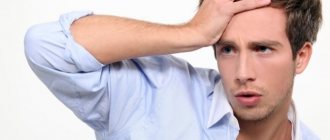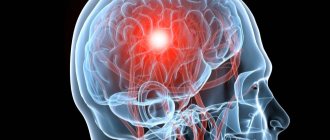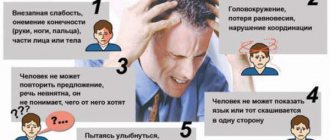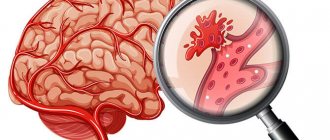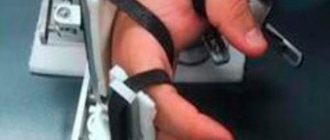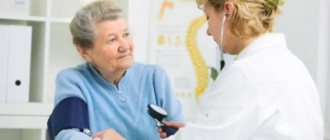Pain after a stroke is one of the common problems that bother patients, along with paralysis, weakness, and decreased skin sensitivity. Pain syndrome can begin in the first days after a stroke, but more often develops later - after several weeks or even months. Its causes are described in detail below, as well as treatment methods - pills, physiotherapy, surgical methods.
Pain after a stroke: find out how to relieve it
Pain after a stroke can be local or central. Local pain occurs due to problems with muscles and joints. Most often this is pain in the shoulders. Central pain is due to brain damage. It can be felt continuously or in attacks. The brain stops understanding normal signals from the body. He recognizes even the slightest touch to the skin as pain impulses. There are other causes of central pain that are not yet understood by specialists.
People who have had a stroke may develop pain in their arms, shoulders, legs, back muscles, and face. The pain can be acute or chronic, burning, stabbing, or scabies-like. This may reduce the skin's sensitivity to touch and temperature changes. Medication and physical therapy help many patients, but not all. Some patients complain of headaches. Its causes and treatment methods are described below.
Read about recovery after a stroke:
- Rehabilitation after stroke
- Nutrition after stroke
- Restoring speech after a stroke
- Urinary and fecal incontinence after stroke
Pain in arms and legs due to muscle spasms
In people who have had a stroke, the muscles may become hard and stiff. Some muscles control the flexion of the arms and legs, while others control their extension. Normally they are in a state of balance. A stroke damages parts of the brain that send nerve impulses to the limbs. The muscles that flex the arms and legs may begin to dominate those that extend the limbs. This problem is called contracture. It causes cramping and severe pain.
Muscle spasms need to be treated as soon as possible, otherwise the arms or legs will bend and stiffen so that they cannot be straightened. Treatment includes physical therapy, medication, and strengthening the correct position of the arms and legs using splints. Sometimes botulinum toxin (Botox) injections into the muscles are prescribed. This medication temporarily paralyzes the muscles so they can no longer bend and cause spasms. As a rule, Botox injections are prescribed for pain in the arms, but not in the legs.
Contact a specialist to find the optimal combination treatment for you. As mentioned above, you cannot waste time. The doctor will likely prescribe baclofen, tizanidine, or other medications. But the emphasis should be placed not on them, but on physical therapy. Splints may be needed to secure the arm or leg in an extended position. The last radical remedy is tendon surgery.
Watch a video about what rehabilitation methods after a stroke are used in a specialized medical institution. You can do the same thing at home without having to pay a lot of money.
Gymnastics and massage
Post-stroke pain syndrome can be eliminated by performing simple gymnastic exercises. To do this, it is not necessary to call a doctor at home; the entire set of exercises can be done independently, sometimes with the help of a caregiver.
It is important to carry out gymnastics only after the end of the acute period of the post-stroke condition. If you do it daily, performing each exercise 50 times, you can achieve positive dynamics in the body’s recovery.
You need to take the starting position lying on your back and perform simple exercises:
- smoothly bend and straighten your elbows;
- bend your arms at the elbow joint and extend them above your head;
- straighten and move your arms to the side, then raise them up;
- make movements with the hand - flexion and extension;
- clenching and unclenching fingers into a fist;
- rotation of the thumb to the sides;
- put your hands along your body and raise them from this position.
Massage helps with increased muscle tone. However, the maximum effect can be achieved only in combination with drug treatment.
Massage therapy can be carried out already in the initial stages of the post-stroke condition. In order for the therapy to give a positive result and the pain syndrome to go away, you need to call a doctor at home and determine with him the correct course of massage procedures.
There are some requirements that must be taken into account when starting a massage therapy complex:
- start it no later than 4 days after the stroke;
- if the patient has hemorrhagic apoplexy, massage begins no earlier than 7 days after the attack;
- the course is a minimum of 15 sessions;
- sessions must be carried out daily, however, if severe pain is observed, the procedures are carried out every other day;
- Before starting special exercises, you need to stretch your paralyzed arm.
By following these recommendations, positive dynamics of recovery of paralyzed limbs is achieved and the syndrome of severe pain is minimized.
Medicines to relieve pain
Doctors prescribe different medications to their patients to relieve pain. It is impossible to predict in advance what effect this or that drug will have, or whether the patient will tolerate it well. Therefore, it is rarely possible to find suitable medications on the first try. However, it is likely that one or another combination of medications will be able to relieve your pain.
Drug groups:
- analgesics;
- anticonvulsants;
- antidepressants;
- drugs that relax muscles;
- non-steroidal anti-inflammatory drugs;
- injections of steroid hormones.
Do not voluntarily take any medications to relieve pain. These drugs tend to cause serious side effects. For many patients, the harm they cause is worse than their positive effect. Do muscle stretching exercises recommended by your physical therapist. Try treatments that stimulate nerves and muscle fibers with mild electrical shocks.
Treatment of paretic pain
Since pain occurs when moving the arm, often during rehabilitation activities, this may cause unauthorized termination of exercise therapy, but the patient must be explained that this cannot be done. With long-term and persistent rehabilitation, pain decreases over time and then disappears.
To alleviate the patient’s condition and thereby continue treatment measures, the following are used:
- Muscle relaxants (mydocalm, baclofen). These drugs affect the central nervous system, which is involved in the regulation of muscle tone, thereby reducing it.
- NSAIDs (diclofenac, nimesulide). This group has some anti-inflammatory and analgesic effects, in this case I note the low effectiveness of use.
- Antidepressants (amitriptyline, sulpiride)
- Anticonvulsants (carbamazepine)
Headache after a stroke: what to do
Many different things can cause headaches in people who have had a stroke. Some of these reasons are the same as in healthy people: stress, depression, lack of sleep. The head after a stroke may hurt due to the side effects of the medications that the patient takes:
- nifedipine - blood pressure tablets;
- dipyridamole is a blood thinner prescribed along with aspirin;
- nitroglycerin - for attacks of heart pain.
Talk to your doctor about whether these medications are right for you. If Nifedipine is worth taking, it is only in extended-release tablets. Regular nifedipine, which acts quickly, causes spikes in blood pressure. Thanks to this action, the risk of first and recurrent stroke increases. If a patient experiences hypertensive crises, then read here what medications can be taken to quickly reduce blood pressure with minimal risk.
For headaches, try treating yourself with paracetamol, but only with your doctor's approval. People who have had a hemorrhagic stroke should not take aspirin! Drink more fluids - 2-3 liters of water and herbal teas per day, if there is no heart failure. Avoid drinks containing alcohol and caffeine. It is likely that over time the headache attacks will weaken and their frequency will decrease.
Sometimes the cause of a headache is that the patient takes painkillers too much and too often. It is not advisable to take these drugs for more than 10 days every month. Moreover, you should not exceed their recommended dose. Your headaches may go away after you abstain from taking paracetamol and other analgesics for a month straight. Talk to your doctor if you think this may be the cause of your problems. Do not stop taking any medications on your own.
If the headache is severe, you should immediately consult a doctor. This may be a sign that a second stroke has occurred, caused by bleeding in the brain (hemorrhagic). The pain syndrome may have developed due to swelling of the brain or changes in cerebrospinal fluid pressure. Headache is an unfavorable symptom for people who have had an ischemic stroke. Moreover, it should make patients who have suffered a hemorrhagic stroke wary.
Pain after a stroke: how to relieve it
Pain after a stroke is one of the common problems that bother patients, along with paralysis, weakness, and decreased skin sensitivity. Pain syndrome can begin in the first days after a stroke, but more often develops later - after several weeks or even months. Its causes are described in detail below, as well as treatment methods - pills, physiotherapy, surgical methods.
Pain after a stroke: find out how to relieve it
Pain after a stroke can be local or central. Local pain occurs due to problems with muscles and joints. Most often this is pain in the shoulders. Central pain is due to brain damage. It can be felt continuously or in attacks. The brain stops understanding normal signals from the body. He recognizes even the slightest touch to the skin as pain impulses. There are other causes of central pain that are not yet understood by specialists.
People who have had a stroke may develop pain in their arms, shoulders, legs, back muscles, and face. The pain can be acute or chronic, burning, stabbing, or scabies-like. This may reduce the skin's sensitivity to touch and temperature changes. Medication and physical therapy help many patients, but not all. Some patients complain of headaches. Its causes and treatment methods are described below.
Diagnosis and treatment
Diagnosis is based on a set of measures that involve clinical and instrumental examination methods:
- collecting anamnesis, studying patient complaints and determining possible causes of pathology;
- checking superficial and deep skin sensitivity;
- establishing muscle strength of the limbs;
- visual field check;
- determination of reactions to auditory, visual and taste stimuli;
- computed and magnetic resonance imaging;
- cerebral angiography.
Treatment of the pathology - symptomatic and pathogenetic - is based on the use of neuroleptics and antidepressants. A polypharmacotherapy regimen, a combination of drugs: an anticonvulsant, an antidepressant and an opioid, is considered effective.
In cases where conservative methods do not bring results, surgical intervention is indicated, during which the doctor destroys the ventrolateral nucleus of the thalamus.
The operation is performed using a minimally invasive stereotactic method.
Along with traditional medicine, treatment of thalamic pain syndrome with folk remedies can be effective. Such therapy is aimed at relieving painful symptoms, but does not affect the causes and mechanisms of pathology.
Traditional medicine suggests treating the syndrome by pain relief or by trying to restore sensitivity to the skin, for which the following recipes can be used.
- Ginger infusion for bathing (to relieve pain): 50 grams of crushed dry root of the plant are placed in a thermos, poured with a liter of boiling water and infused for one hour. The contents are added to the bath. It is necessary to take water procedures for 15 minutes. Daily use of this infusion for bathing is contraindicated. Before taking a bath with ginger for the first time, you need to determine whether there are any allergic reactions to the plant. With a cotton swab moistened with the prepared solution, wipe a small area of skin on the wrist or elbow and wait 15-20 minutes.
- In case of loss of sensitivity, alcohol tincture of dandelions has a therapeutic effect. To prepare it, take 100 grams of the dry matter of the plant and pour half a liter of vodka. Infuse the medicine for a week, leaving the jar in a dark place and periodically shaking the contents. The tincture is used to rub the parts of the body that have lost sensitivity.
Thalamic syndrome is a complex of neurological symptoms caused by damage to the thalamus opticus. Diagnosis of pathology involves the use of clinical and instrumental methods. Treatment is symptomatic and pathogenetic.
Loading…
Restoring movement in the leg
Rehabilitation of the leg after a stroke must begin a month after hospital treatment, when a special course will be developed. It is calculated based on the patient’s gender and age, the degree of brain damage and the type of stroke. You can recover at home or in special centers and boarding houses, where there are doctors and the necessary conditions. The process takes at least three to eight months and sometimes physical capabilities are not fully restored. As for the rules for rehabilitation, you need to adhere to a diet, take medications, do gymnastics and swimming, go to bipolar therapy or acupuncture, treat chronic diseases and mental disorders, avoid stress, visit a massage therapist and psychologist.
Revitalizing massage
Massage is prescribed to all patients , regardless of the consequences of a stroke. Because it allows you to disperse blood throughout the body, eliminate the development of blood clots and blockages, saturate cells with oxygen, and maintain muscle tone and strength. Massage is especially important for bedridden patients and those who suffer from paralysis of the whole body. Since this will avoid bedsores, ulcers and paresis, which often causes necrosis and blood poisoning.
Passive gymnastics
Leg exercises after a stroke can also be done while lying down until the first reflexes are restored. You need to repeat the exercises every day twice for half an hour. Start with a warm-up, enlist the help of physiotherapists and massage therapists who will perform exercises with your legs. It’s better to start with a massage or rubbing, then stretch your fingers and work out each muscle. Then move on to bends, rotations, relaxation and tension, stretch and try to feel your legs.
Active gymnastics
Gymnastics for the legs after a stroke in an active mode is also carried out every day after waking up and before bed, and can be accompanied by a massage, a visit to the pool, acupuncture and exercise equipment.
If it is difficult for the patient to complete tasks, you can go to the pool, where it is easier to develop muscles, and then move on to land.
Start with a warm-up, warm-up, and then do bending, rotating, squatting, lunging, bending and straining. You can use exercise machines or weights.
Teaching a patient to walk
Teaching a patient to walk can begin only after the doctor’s permission and under the supervision of a physiotherapist; this is done two to four weeks after the start of rehabilitation, when the first reflexes and reactions to stimuli appear. Classes begin with water procedures or exercise equipment with insurance. Before exercise, it is better to do a massage or a short warm-up so that the muscles quickly regain tone and strength. The patient is taught to put his leg out and take the first steps, supported, but not overworked.
In this publication you will learn about why your leg was paralyzed after a stroke
Exercises for hands after a stroke can be viewed here https://insult-med.com/posle/posledstviya/konechnosti/ruki/uprazhneniya-dlya-ruk-posle-insulta.html
